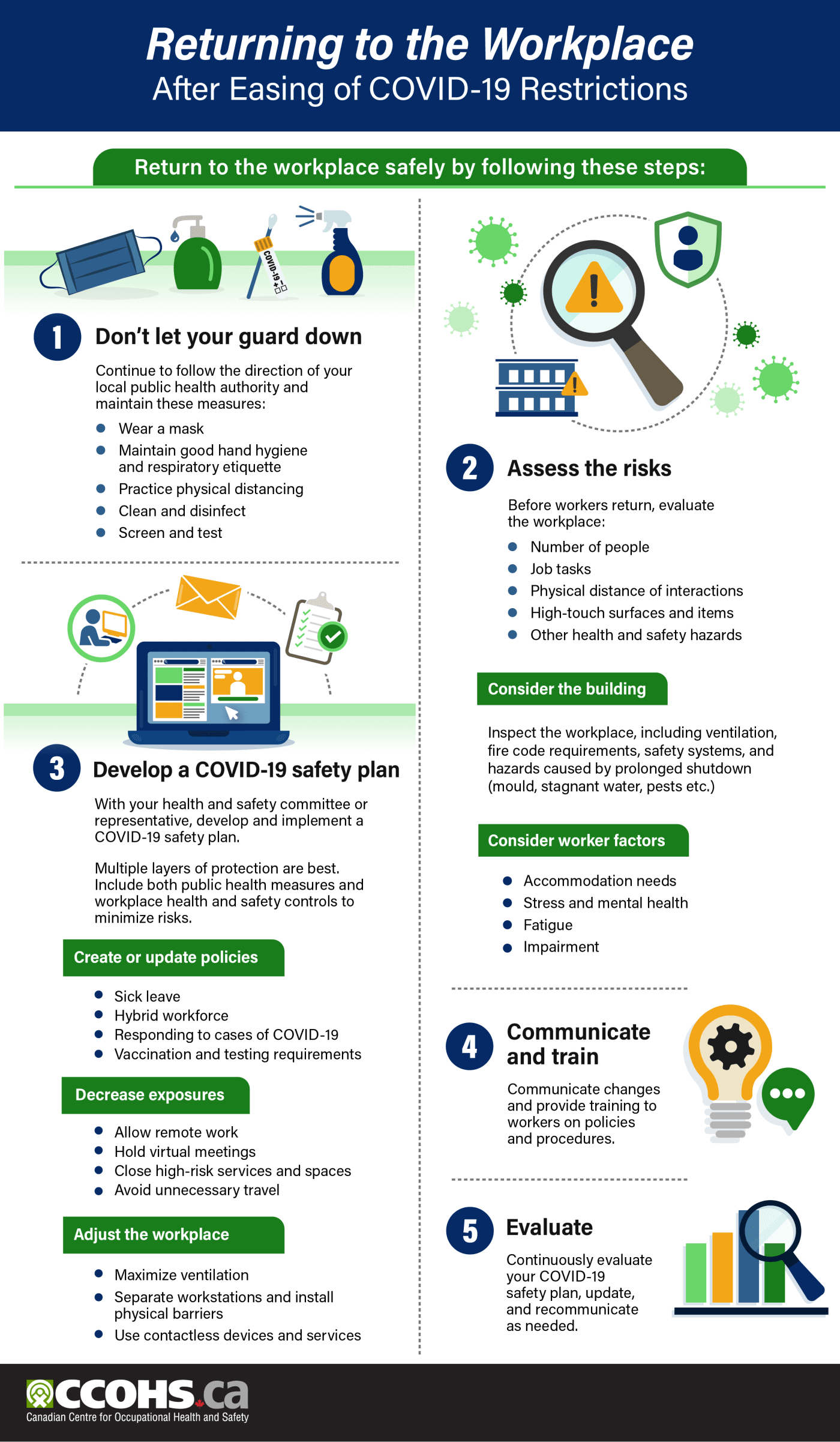Returning to the Workplace After Easing of COVID-19 Restrictions Infographic and its text description
[PNG, 232 KB]

Description: Returning to the Workplace
After Easing of COVID-19 Restrictions
Return to the workplace safely by following these steps:
1. Don’t let your guard down
Continue to follow the direction of your local public health authority and maintain these measures:
- Wear a mask
- Maintain good hand hygiene and respiratory etiquette
- Practice physical distancing
- Clean and disinfect
- Screen and test
2. Assess the risks
Before workers return, evaluate the workplace:
- Number of people
- Job tasks
- Physical distance of interactions
- High-touch surfaces and items
- Other health and safety hazards
Consider the building
- Inspect the workplace, including ventilation, fire code requirements, safety systems, and hazards caused by prolonged shutdown (mould, stagnant water, pests etc.)
Consider worker factors
- Accommodation needs
- Stress and mental health
- Fatigue
- Impairment
3. Develop a COVID-19 safety plan
With your health and safety committee or representative, develop and implement a COVID-19 safety plan.
Multiple layers of protection are best. Include both public health measures and workplace health and safety controls to minimize risks.
- Create or update policies
- Sick leave
- Hybrid workforce
- Responding to cases of COVID-19
- Vaccination and testing requirements
- Decrease exposures
- Allow remote work
- Hold virtual meetings
- Close high-risk services and spaces
- Avoid unnecessary travel
- Adjust the workplace
- Maximize ventilation
- Separate workstations and install physical barriers
- Use contactless devices and services
4. Communicate and train
Communicate changes and provide training to workers on policies and procedures.
5. Evaluate
Continuously evaluate your COVID-19 safety plan, update, and recommunicate as needed.
Document last updated on: 2021-09-24

